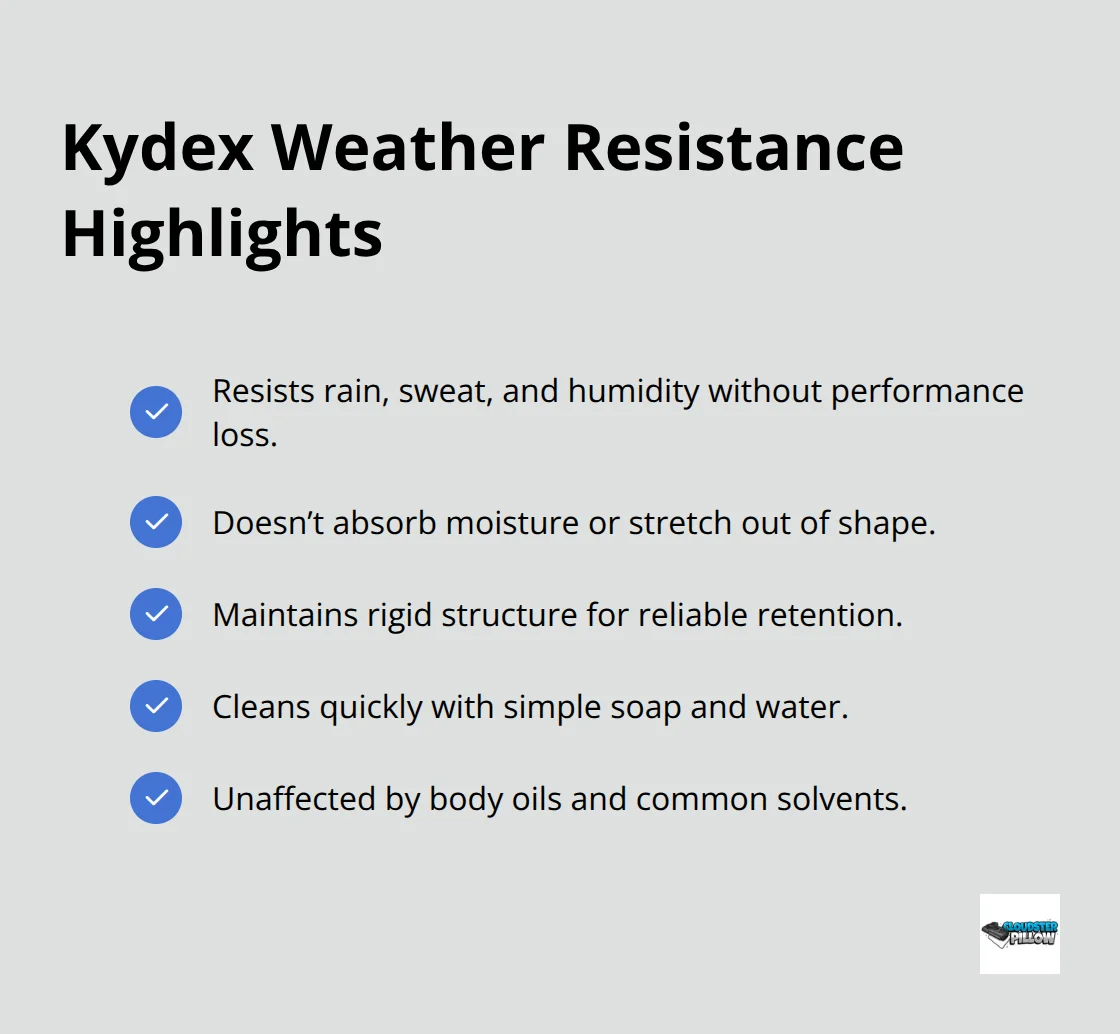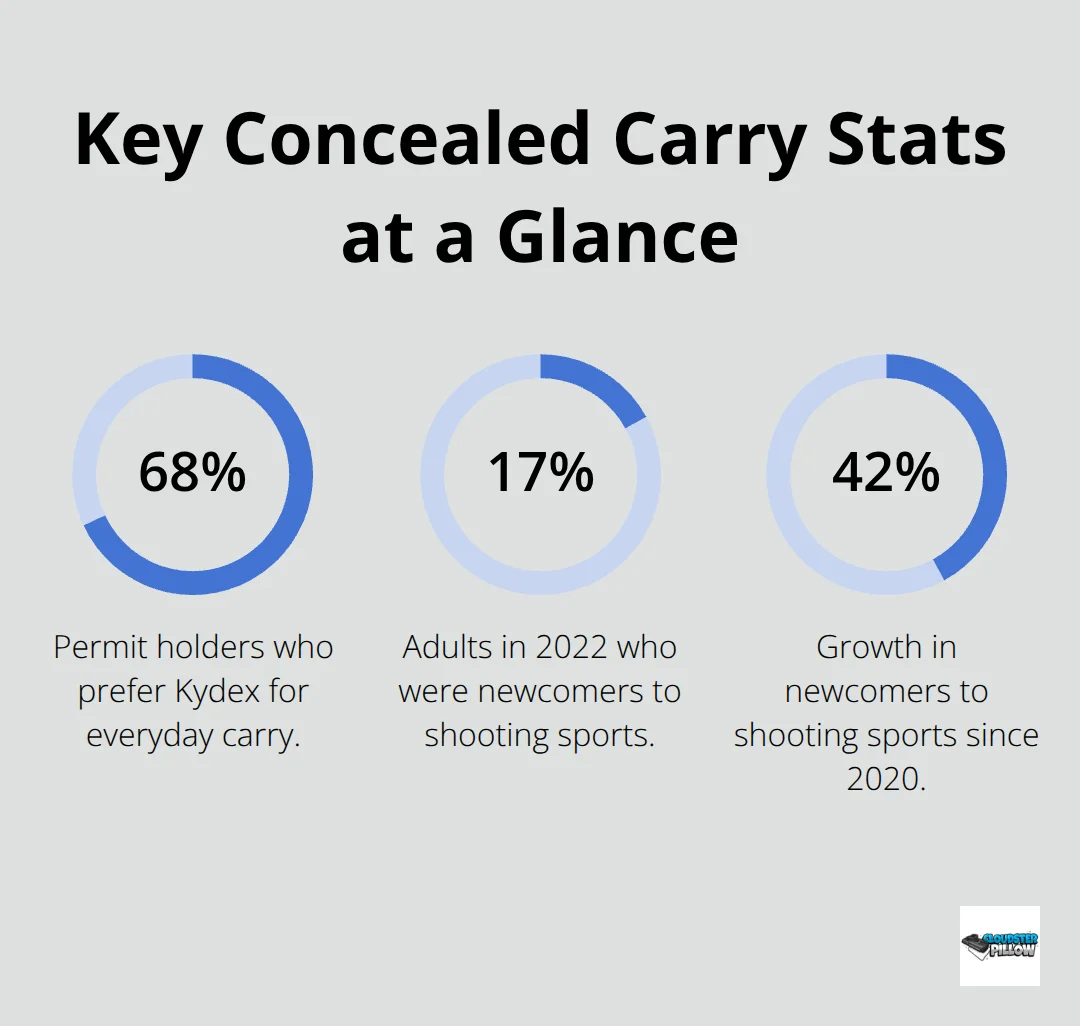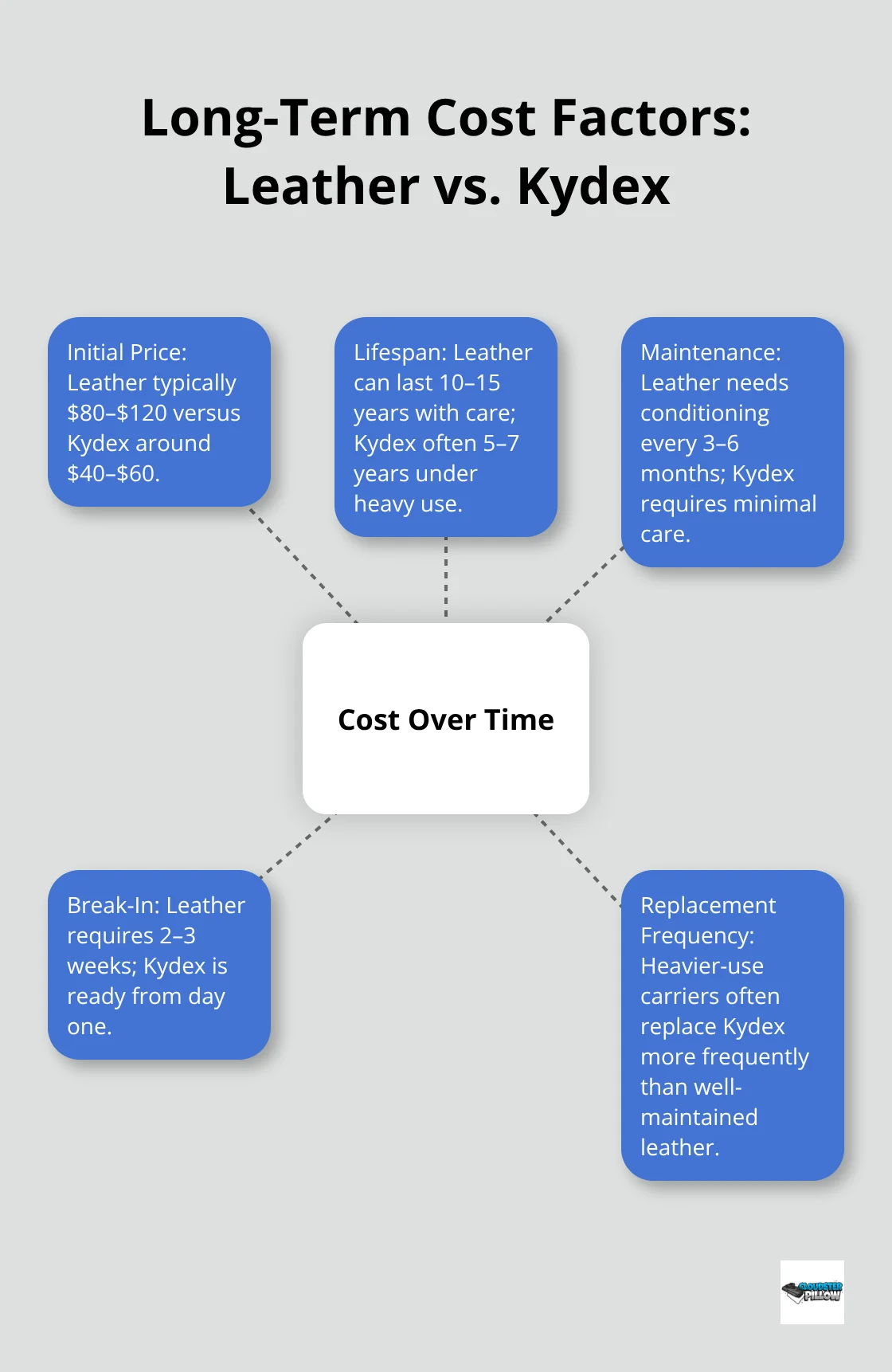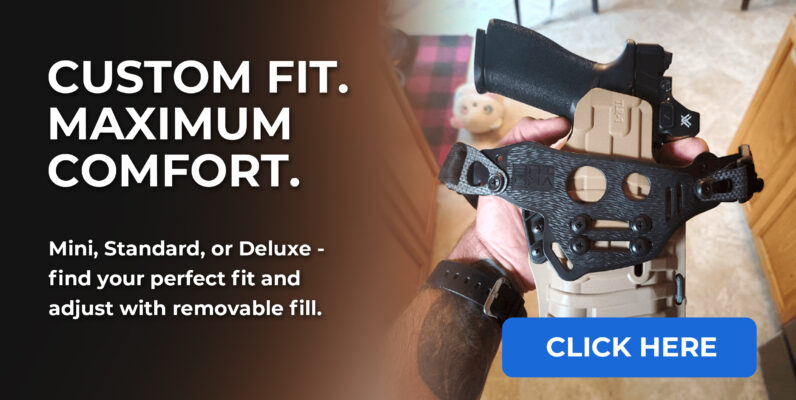Holster Gear
Kydex vs Leather Holsters for Concealed Carry
Choosing the right holster materials can make or break your concealed carry experience. Kydex and leather represent two completely different approaches to holster design.
We at Cloudster Pillow see carriers struggle with this decision daily. Each material offers distinct advantages that appeal to different carry styles and preferences.
The choice between these materials affects everything from comfort to retention to long-term durability.
Why Choose Kydex for Concealed Carry
Kydex holsters dominate the concealed carry market for solid reasons. The Concealed Carry Association reports that 68% of permit holders prefer Kydex for everyday carry. This thermoplastic material beats leather in three critical areas that matter most to serious carriers.
Weather Resistance That Actually Works
Kydex holsters handle weather conditions that destroy leather options. Rain, sweat, and humidity create zero impact on Kydex performance. The National Institute of Justice develops standards for duty holster retention that emphasize consistent performance.
Leather absorbs moisture, stretches, and loses shape over time. Kydex stays rigid and functional whether you face Florida humidity or Colorado snow. Carriers switch to Kydex after their leather holsters fail during summer carry.
The material resists sweat, oil, and solvents without any degradation. Clean-up takes seconds with soap and water (no special treatments required).

Retention and Quick Access
Kydex provides superior retention through precise friction fit rather than unreliable straps or snaps. The rigid shell maintains consistent grip pressure on your firearm regardless of movement or position changes.
The material never collapses during reholstering like soft materials do. Professional training instructors recommend 500 practice draws with any new holster. Kydex makes this training safer and more consistent than alternatives.
Quality Kydex holsters allow for adjustable retention settings. Draw speed improves significantly compared to leather alternatives that can grab clothing or shift position during the draw stroke.
Lightweight Design for All-Day Carry
Kydex weighs significantly less than leather holsters. This weight difference becomes noticeable during extended carry periods. The slim profile reduces printing under clothing while maintaining structural integrity.
The material maintains its shape without the bulk that leather develops over time. Carriers report less fatigue and better concealment with properly fitted Kydex systems.
While Kydex excels in performance metrics, leather holsters offer their own compelling advantages that appeal to different carrier preferences and needs.
Why Leather Holsters Still Matter for Concealed Carry
The Comfort Factor That Changes Everything
Leather holsters excel where Kydex fails most dramatically: all-day comfort against your body. While specific comfort statistics weren’t found in our research, leather delivers this advantage through natural materials that breathe and flex. The National Shooting Sports Foundation found that 17 percent of all adults participating in the shooting sports were newcomers in 2022, reflecting a 42 percent growth since 2020 when they select holsters.
Premium leather holsters like the Galco Combat Master require a 2-3 week break-in period, but they reward patience with unmatched comfort. Carriers with sensitive skin or those who carry for 12+ hours daily often switch to leather after they experience Kydex hot spots and pressure points. Leather absorbs body heat instead of reflects it back (which reduces sweat buildup during extended wear periods).

Professional Appearance and Discretion
Leather holsters provide the quieter draw that matters in professional environments. The material dampens sound compared to the distinct click of Kydex against metal. Law enforcement officers who work undercover and business professionals who carry in corporate settings choose leather for this acoustic advantage.
Quality leather ages gracefully and maintains a refined appearance that complements professional attire. Exotic leather options from manufacturers like Bitterroot Gunleather offer pride of ownership that mass-produced Kydex cannot match. The traditional aesthetic appeals to carriers who view their holster as both functional gear and personal expression.
Body Conformity Through Natural Adaptation
Leather holsters mold to your specific body shape over time and create a custom fit that factory-molded Kydex cannot replicate. This natural conformity reduces print and improves weight distribution across your belt line. Larger handguns benefit significantly from leather’s ability to distribute weight more evenly than rigid alternatives.
The Bitterroot Gunleather IWB holster specifically addresses back pain issues that traditional IWB designs create. Leather’s flexibility allows the holster to move with your body during daily activities instead of creates pressure points that develop with rigid materials (which can cause discomfort throughout the day).
While leather offers these comfort advantages, both materials face different challenges when it comes to maintenance, cost, and environmental factors that affect long-term performance.
Which Material Wins Long-Term
Maintenance Reality Check
Kydex holsters require almost zero maintenance beyond basic soap and water cleaning. Leather holsters demand regular conditioning every 3-6 months to prevent cracking and maintain flexibility. Quality leather conditioners cost $15-25 annually, while Kydex needs nothing beyond occasional wipe-downs. Carriers who neglect leather maintenance face holster failure, especially in humid climates.
Leather holsters absorb sweat, oils, and moisture that create permanent stains and odor retention. Professional leather cleaners charge $30-50 per holster annually for deep restoration. Kydex resists all these issues without any special care requirements. The time investment alone makes Kydex the clear winner for busy carriers who want reliable gear without constant upkeep.
Cost Analysis That Matters
Premium leather holsters from manufacturers like Galco start at $80-120, while quality Kydex options begin around $40-60. However, leather holsters that receive proper care can last 10-15 years versus 5-7 years for Kydex under heavy use. The real cost difference emerges when you factor in replacement frequency and maintenance expenses.
Leather holsters require break-in periods of 2-3 weeks, during which you cannot rely on them for consistent performance. Kydex works perfectly from day one. Carriers who switch holsters frequently find Kydex more economical due to lower initial investment and immediate usability. New gun owners prioritize affordability when they select their first holster system.

Climate Performance Differences
Hot, humid environments destroy leather holsters faster than any other factor. Carriers in hot climates experience higher leather holster failure rates than those in dry climates. Kydex maintains consistent performance regardless of temperature or humidity levels. Sweat buildup creates the biggest comfort challenge with Kydex during summer months, while leather becomes unusable due to stretch and shape loss.
Cold weather makes leather brittle and prone to crack, while Kydex remains flexible down to -40°F. Carriers in northern states choose Kydex specifically for winter reliability. Rain exposure ruins leather holsters within hours, but Kydex sheds water completely. Even reinforced holsters will fail if owners use oil or conditioner to soften the leather. The climate factor alone determines holster choice for many serious carriers who refuse to compromise on reliability (regardless of personal preference for traditional materials).
Final Thoughts
Your carry environment determines which holster materials work best for your situation. Kydex dominates in hot, humid climates where leather fails from moisture damage. Law enforcement and military personnel choose Kydex for consistent retention and weather resistance during demanding operations.
Leather excels for office professionals who need quiet draws and refined appearance. Carriers with sensitive skin or those who carry large handguns for 12+ hours daily benefit from leather’s natural comfort and body conformity. New carriers often start with affordable Kydex options to learn their preferences before investing in premium leather.
Your body type, climate, and carry schedule matter more than personal preference when you select holster materials. Test both options if possible before you commit to either material long-term. We at Cloudster Pillow help carriers achieve all-day comfort with both Kydex and leather holsters through our holster wedge collection that enhances concealment and reduces pressure points for AIWB and IWB carry positions (regardless of which material you choose).


